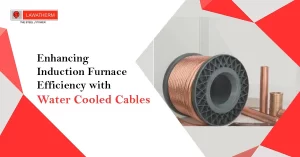Steel production often brings environmental concerns. But with the rise of modern induction furnace technology, your steel plant can reduce its ecological impact while maintaining high performance. These furnaces are cleaner, quieter, and more adaptable to green practices. If you’re looking to move toward eco-friendly steel production, here’s how choosing a modern induction furnace can help you get there.
At Lawatherm, we focus on supplying high-quality induction furnace components that support green manufacturing goals across the steel sector.
1. Reduced Carbon Emissions
Traditional steelmaking uses coke and coal, leading to high CO₂ emissions. A modern induction furnace uses electricity to melt scrap metal. This eliminates the need for fossil fuels during the melting stage.
You can lower your plant’s carbon footprint drastically by switching. If your electricity comes from renewable sources, emissions can drop close to zero.
This matters when clients or regulators ask about your sustainability practices. Cleaner melting means fewer permits, fewer complaints, and a better reputation.
Have you calculated your plant’s total CO₂ output recently? Consider comparing it before and after switching to induction.
2. Lower Energy Use
A modern induction furnace is an energy-efficient furnace. It heats metal directly through electromagnetic induction, which avoids the energy losses found in gas or arc-based systems.
Less heat escapes into the environment. More power goes straight into the melt. This direct approach can reduce total energy consumption by up to 30% in some operations.
It’s not just good for the planet. Lower electricity bills make your operation more competitive. You cut costs while supporting sustainable steelmaking practices.
Think about the size of your last energy bill. How much could you save by switching to a more energy-efficient furnace?
3. Cleaner Air Inside and Outside the Plant
Air quality is a major concern in steel plants. Open flames and chemical reactions in older methods release soot, fumes, and toxic gases. A modern induction furnace produces no open flame and emits almost no smoke.
With the right induction furnace components, such as sealed covers and dust extraction, you can keep air clean in and around your facility.
This protects workers from respiratory risks and improves environmental compliance. It also helps when you’re applying for expansion or emission approvals.
Have you ever had to stop operations because of air quality violations? This switch could reduce that risk.
4. Less Noise Pollution
Steel plants are known for being loud. But a modern induction furnace is much quieter than traditional arc or blast furnaces. No roaring flames. No high-voltage arcs. Just a soft hum during operation.
This reduces noise exposure for workers. It also helps if your plant is near residential or commercial areas.
Lower noise means fewer complaints, a calmer workplace, and better focus for your team. It’s an often-overlooked but important part of green manufacturing.
When was the last time you evaluated noise levels on your production floor?
5. Better Scrap Recycling
One of the biggest advantages of a modern induction furnace is how well it works with metal scrap. It melts scrap quickly, safely, and cleanly. This allows for more recycling and less mining of raw materials.
Using more scrap cuts down on the environmental damage of extraction and transport. It supports the circular economy and fits well with sustainable steelmaking goals.
With quality induction furnace components from Lawatherm, you can melt a wide range of scrap materials while maintaining melt quality and process control.
What percentage of your feedstock is scrap today? Could you increase it with a cleaner melt process?
Final Thoughts
Lawatherm helps steel plants like yours upgrade to greener operations with reliable induction furnace components. Whether you need precision parts or full system support, we back your move to a cleaner and smarter production line.
Choosing a modern induction furnace isn’t just about staying ahead in the market. It’s about taking real steps toward cleaner air, safer workplaces, and responsible steelmaking.
Start with a single upgrade. Build from there. You don’t have to overhaul everything at once. But the sooner you make the switch, the sooner your plant can benefit.




